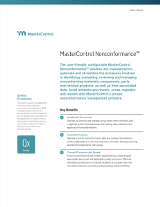
GxP Lifeline
The Costly Impact of Nonconformance on Your Business

To maintain quality in your organization, you need to know the true cost of nonconformance. Nonconformance happens when products, services, or processes don't meet requirements or standards. Finding out the costs of nonconformance can help you improve, prevent future problems, and save money. Let's talk about different ways to measure nonconformance costs, including using nonconformance management software and having a good quality management system (QMS).
Measure Direct Cost
By measuring the expenses associated with nonconformance management, you can quantify the overall impact to your organization. This includes the costs resulting from internal failures, like product rework, scrapping out defective products or materials, and time to retest. By tracking expenses over time, you can break out the cost of nonconformance from the total cost of quality, assess trends, and measure the positive impact of continuous improvement efforts.
Prevention and Detection
It's important to budget for prevention and detection costs. These costs help you avoid nonconformance or catch them earlier in the manufacturing process. Prevention and detection costs include things like quality control inspections, tightly managed document control, training programs, evaluations, and QMS improvements. Building an appropriate quality assurance budget and measuring the quality program performance allows comparison with the quantified costs of nonconformance. One can then calculate the savings resulting from continual improvement tied to the prevention and detection practices.
Quantify Customer Impact
Nonconformance in the hands of your customer is the worst possible outcome and can severely impact a company's brand and future sales. Gather data on nonconforming product or service complaints, returns, or warranty claims. In doing so, you can estimate lost revenue and measure the cost of post-market failure tied to customer dissatisfaction. You can also examine the impact of nonconformance management failures on customer loyalty and brand reputation through surveys and interviews.
Analyze and Report
It's important to analyze and report the information you collect across the described areas of possible nonconformance. Reports should show how each type of cost adds to the total price of nonconformance. Then, you'll be able to see patterns or recurring issues, which help you solve problems before they get out of control. Identifying the most prevalent and most expensive forms of nonconformance helps prioritize your plan of attack and ensure continuous improvement measures are appropriately aligned. It is also important to ensure management receives nonconformance reports at regular intervals, understands their meaning and implications, and champions continuous improvement practices.
Use Nonconformance Management Software
It's easier to measure and manage nonconformance costs with nonconformance management software. These software tools enable you to collect and analyze data efficiently, receive notifications, and track corrective measures in real-time. Centralized nonconformance management produces consistent and reliable results.
Aim for Continuous Improvement in Quality Management
Measuring nonconformance costs is not a one-time activity. It's an ongoing process that requires continuous improvement. To minimize nonconformance costs and drive quality improvements, you need a quality culture throughout your organization. Make sure your QMS is up to date and aligned with industry standards and ensure your employees have the training and resources they need. This gives them a better understanding of quality requirements and their role in nonconformance management. Employee feedback and open communication can also lead to valuable insights for improvements.
These measures will help you make data-driven decisions, prevent quality issues, and ensure your organization's long-term success. Nonconformance costs go beyond just financial losses; they also affect customer satisfaction and your reputation. Nonconformance management can strengthen your QMS processes, increase efficiency, and make customers happier.
Take the initiative to evaluate your current practices and implement effective nonconformance management. Make data-driven decisions and strive for excellence in every aspect of your operations. Doing so can reduce costs, improve product performance, and drive growth in your business.
